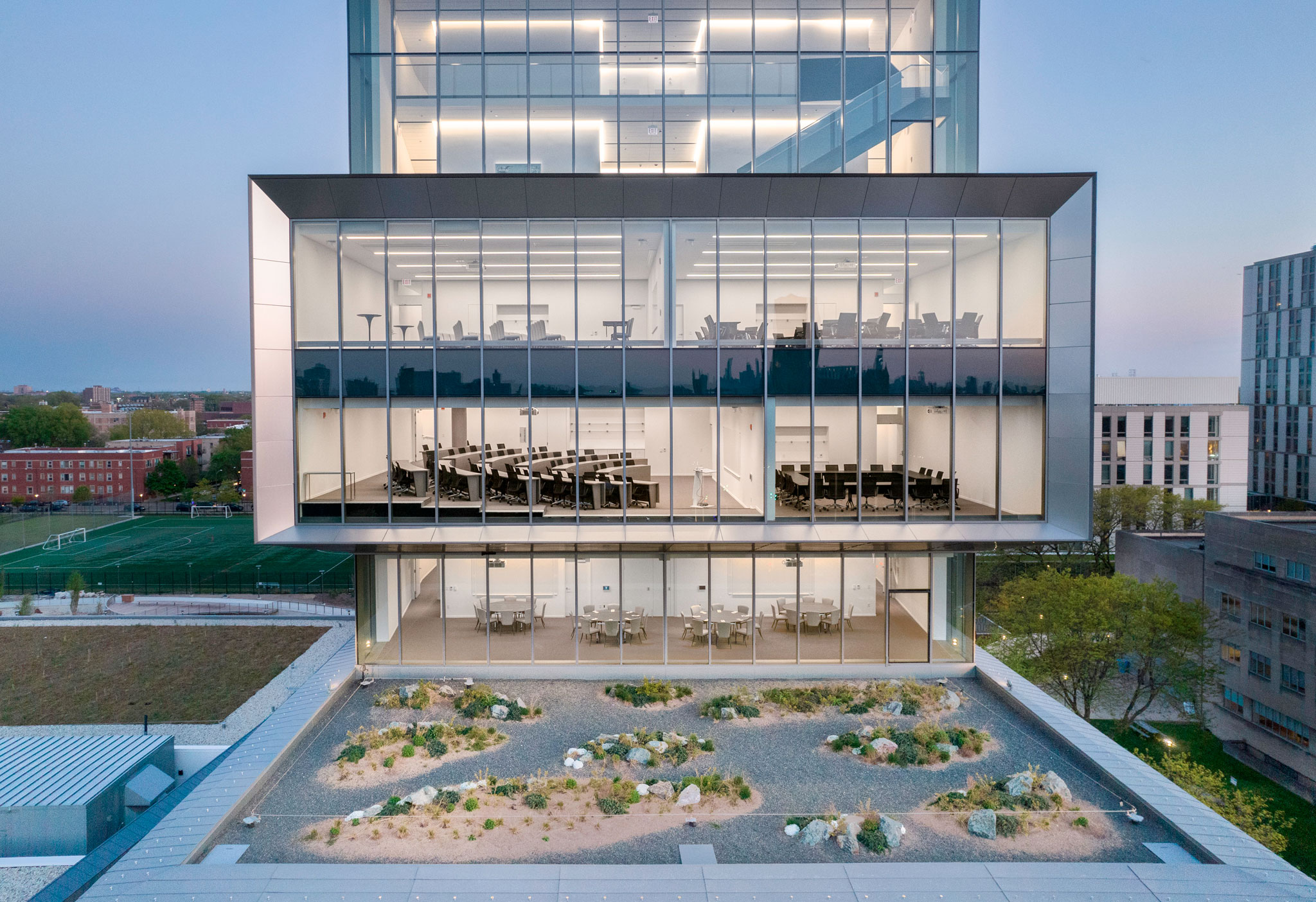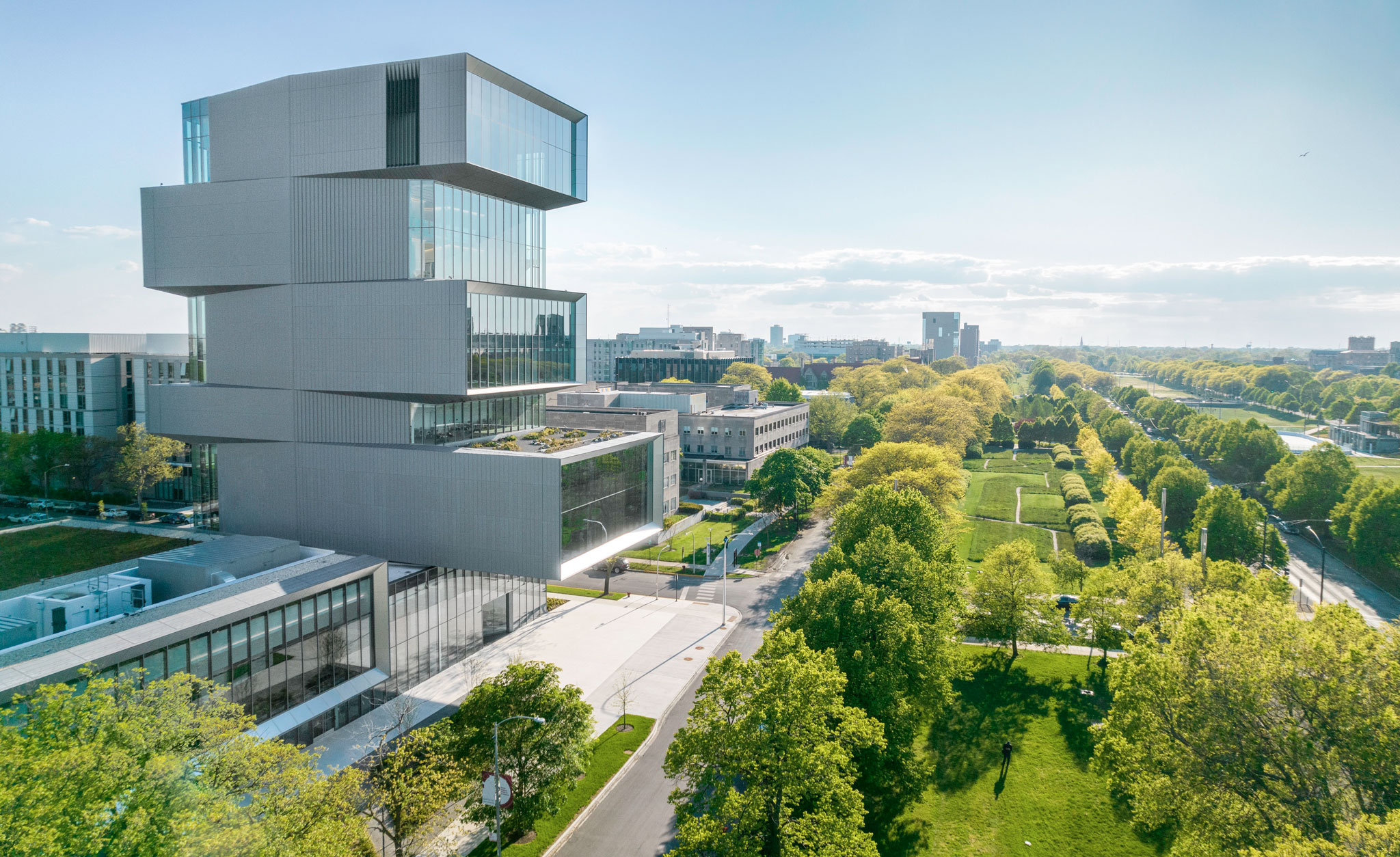David Rubenstein Forum building has echoes of their previous work, the 2006 Institute of Contemporary Art in Boston, or the Roy and Diana Vagelos Education Center. A new step in a typology with great examples like the memorable prefab housing units, known as Habitat and designed by architect Moshe Safdie for the 1967 World’s Fair in Montreal.
The new university facility consists of six stacked blocks that each cantilever out from a central spine, with a 12-meter cantilever on the building's entrance. The cantilevered volumes have glazed ends, with views north to downtown Chicago and Lake Michigan or south across the university's campus (With a remarkable glass, designed to be visible to migrating birds so they won’t crash into it and kill themselves). Its 9,000-square-metre, which cost about $100 million, contains a 285-seat auditorium along with lecture halls and numerous multipurpose rooms for teaching.

David Rubenstein Forum building by Diller Scofidio + Renfro. Photograph by Brett Beyer.

David Rubenstein Forum building by Diller Scofidio + Renfro. Photograph by Brett Beyer.
Diller Scofidio + Renfro designed the High Line, with universal praise. Their work includes The Shed, a shape-shifting, multipurpose arts hub with a movable outer shell at Manhattan’s Hudson Yards, the Columbia Business School at University’s New Manhattanville Campus, Park Union Bridge in Colorado Springs, Tianjin Juilliard School in Tianjin, China, among others

Project description by Diller Scofidio + Renfro
The David M. Rubenstein Forum at the University of Chicago is a space of discourse and intellectual exchange aimed at fostering the outward engagement of visiting scholars, researchers and dignitaries from around the world. The Forum's prominent location on Chicago’s Midway Plaisance across from Rockefeller Chapel offers expansive views of Downtown Chicago and Lake Michigan as well as the University Campus and Woodlawn Community. The building is composed of a two-story base and a slender, eight-story tower that provides the University with a 285-seat auditorium and much needed multipurpose meeting spaces for workshops, symposia and lectures, among other activities.
The tower is organized as a stack of neighborhoods with meeting and communal spaces offering diverse environments—formal and informal, calm and animated, focused and diffused, scheduled and spontaneous. Each neighborhood coalesces around a private social lounge that offers a sense of community and identity. The neighborhoods are vertically stacked, rotated and oriented to their own unique perspective of Chicago, creating a panoramic, 360 degree form rather than a front or back face.
The building prompts its varied populations to cross paths with one another where possible to enhance intellectual exchange. The lower floors of the Rubenstein Forum are porous and dynamic with connections to the campus and the community in all directions. As one climbs the building, there is a progressive retreat from the everyday to more contemplative spaces with dramatic views of Chicago and Lake Michigan.


















































